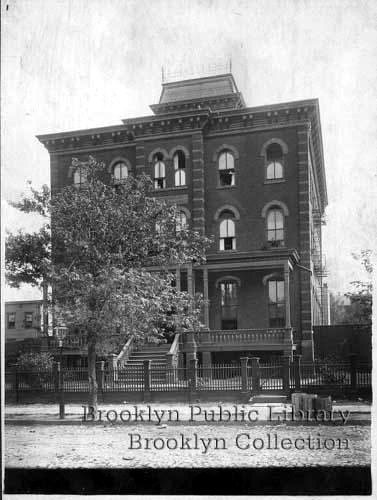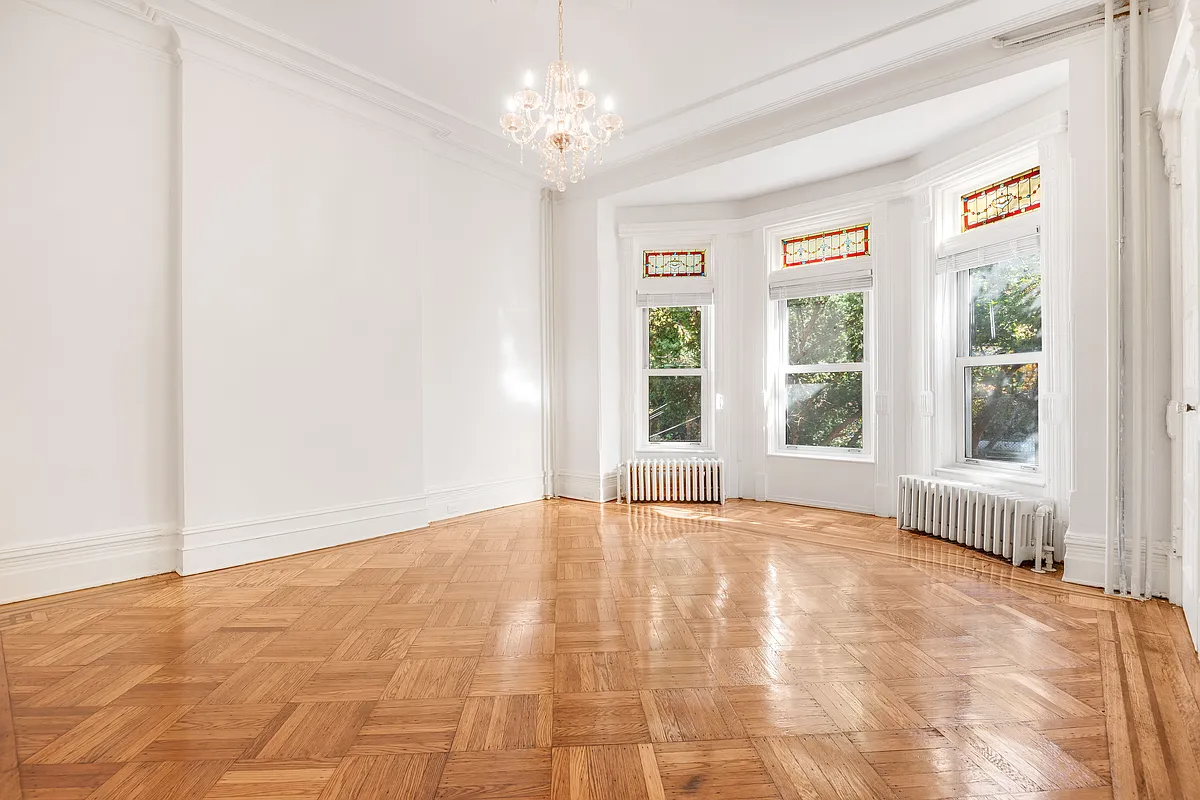Walkabout: The Gloucester Family of Brooklyn, Part 2
Reverend James and Mrs. Elizabeth Gloucester and their children arrived in Brooklyn in the decade preceding the Civil War.

Reverend James and Mrs. Elizabeth Gloucester and their children arrived in Brooklyn in the decade preceding the Civil War. James Gloucester was the minister of the newly established Siloam (Shiloh) Presbyterian Church, and Elizabeth was a successful businesswoman. They had six children, two boys and four girls, who ranged in age from toddlers to teenagers. This in itself would not have been overly remarkable, but for the fact that the Gloucesters were African American, during a time when slavery in the United States was legal and quite active, and even in the Northern city of Brooklyn, black people were relegated to the background, seen as little more than servants and laborers. The continuation of their story, as begun in the last Walkabout, follows. But first, please read Part One.
Throughout much of the 19th century, a large portion Brooklyn’s black community lived in the area now part of Downtown and Dumbo, including parts of Vinegar Hill. Today, Metrotech, Jehovah’s Witnesses’ factories, and the roads leading to the Brooklyn and Manhattan bridges have changed a landscape that was once filled with houses, churches and businesses. Here, a majority of Brooklyn’s black community lived side by side with Irish and other European immigrants. Most of the people here, of all persuasions, were the working poor, but that did not mean that there were not viable businesses and houses of worship, as well as people who were better and also worse off.
Many of Brooklyn’s oldest and most influential black churches originated in this area, and still bear the names of the streets they were started on, such as Concord Baptist, Fleet Street African Methodist Episcopal, (now First AMEZ Church) and Bridge Street African Wesleyan Methodist Episcopal Church. Siloam Presbyterian Church was also here, founded by Reverend Gloucester and others in 1849. For over sixty years, they worshipped in a church on Prince Street between Myrtle and Willoughby, in a building built to a great degree by money donated by Mrs. Gloucester.
Like all of these churches, Siloam Presbyterian’s minister and congregation was active in the anti-slavery movement. New York State abolished slavery in 1821, but that didn’t mean that her African American citizens were not keenly aware that slavery was still quite active elsewhere in the United States, and there, but for the grace of God…. They were also quite aware that slavery as an institution was responsible for much of the inequality they felt here in Brooklyn. As long as black people were considered property in the United States, there would be few opportunities for rising above their station as laundresses, laborers and servants. There would be little chance to be seen as equal, deserving of the same opportunities, employment and education as any white person. Even immigrants coming here, dirt poor and unable to speak English, had more opportunities.
Most of the black churches had themselves been started because their congregants were not wanted or welcomed in local white churches. If black folk could attend many of the white churches, they were shunted off into the balconies, and were not truly members of the church able to attend social functions or join committees or boards. So they started their own churches, which grew to be powerful agents of spiritual and social change, even in the 19th century. The Abolitionist and anti-slavery movement was a powerful and important cause, and Siloam was right in the middle of it all.
Siloam Church had an Underground Railroad fund, and hosted speakers, both black and white, who told of slavery’s horrors and the efforts to end it. Frederick Douglass was one of their friends, and a frequent speaker at the church. Another of those speakers was John Brown, the fiery abolitionist who had come to believe that slavery would never end, unless good men were willing to kill, fight and die for the cause. It’s not known how many times John Brown would speak at Siloam, but he and the Gloucesters became friends. James corresponded several times with Brown over the years, and these letters still exist.
In 1858, John Brown came to New York City to speak and raise money to arm an army to end slavery. He stayed with the Gloucesters for a week, cementing the friendship. The Gloucesters gave Brown $25 for the cause, with a note telling him to “do battle with that ugly foe, slavery.” The Brooklyn Eagle related the last conversation Elizabeth Brown had with John Brown before he left for Harper’s Ferry, Va.:
Brown said, “‘Goodbye, Sister Gloucester. I’ve only sixteen men, but I’m to conquer.’ Mrs. Gloucester said to him, ‘Perhaps you will lose your life.’ ‘Well, my life,’ he replied, ‘is not worth much. I’m an old man. In Kansas, the balls flew around my head as thick as hail. I’ll never be killed by a ball. If I fall, I’ll open a ball in this country that will never stop until every slave is free.’” John Brown left New York, went to Harper’s Ferry, and on into the history books.
While the abolitionist cause and the fight for equality were a large part of the Gloucesters life, there was much more to Elizabeth’s life. Even as she worked with her husband and his church in various causes, she still had time to run her own businesses. She bought and traded property in Brooklyn and Manhattan like a born real estate mogul. She never bought anything that she didn’t sell at a profit, or make money on by keeping it. The records are full of her transactions up until her death in 1883, with purchases in various places in Brooklyn.
Her prize property was the former Hamilton Club on the corner of Remsen and Clinton streets in Brooklyn Heights. The old established club, home to Brooklyn’s bluebloods, was moving to a new location, and she was able to purchase it from them and turn it into the family home, as well as an upscale boarding establishment called Remsen House. The family would live there well past her death. The building would eventually be sold to another club, and then the Hamilton Club bought it back, owning it until the 1940s when it was torn down for an apartment building.
Elizabeth Gloucester was well known for her philanthropy. After the Civil War, she gave generously to organizations in the south that were working to educate freed slaves, teaching reading, writing and arithmetic to a people who had been legally denied that knowledge for centuries. She organized fairs here in Brooklyn to raise money for freedmen’s organizations.
She was a fierce advocate of education, and made sure that three of her daughters graduated from Oberlin College in Ohio. She was a familiar face in Brooklyn’s charitable community, giving thousands of dollars for the founding of the Colored Orphan Asylum in Weeksville, among other causes. When the family had lived in Philadelphia, Mrs. Gloucester had been a member of St. Mary’s Street Presbyterian Church, an affiliation she never gave up. She continued to support them as well.
In August of 1883, Elizabeth Gloucester passed away, having succumbed to pneumonia. She was in her seventies. The Brooklyn Eagle was at the funeral, which was held at Remsen House. Newspapers from all over the world wrote about the remarkable “colored woman” who was said to be the richest woman of her race. Her life story and achievements were spread across the world, with stories appearing as far away as New Zealand and Australia. The funeral was an elaborate and beautiful event, attended by Brooklyn’s black and white elite.
The Eagle noted that “the flowers filled the room with an abundance of fragrance, and the heavy odor of the day lily was mixed with the delicate perfume of the tea rose. In the handsome silver mounted casket rested all that remained of the late Mrs. Elizabeth A. Gloucester, the calm, dark face of the deceased coming in strong contrast to the white satin cushion around it. Gathered in the elegant apartment was a congregation of people as has seldom before come together in Brooklyn. It was made up of richly dressed white ladies, fashionably attired gentlemen, and a number of well-known colored people of this city and New York.”
Elizabeth Gloucester was dead, and her estate was worth a lot of money. Her husband and children were very much alive, and unfortunately, there was legal trouble in the wind. Money seems to do that to the best of people. That tale and the conclusion of the Gloucester story, next time.
(Howard Colored Orphan Asylum Photo: Brooklyn Public Library)









This is a great tale of a terrific woman, but from your foreshadowing, I fear the third chapter will end badly. Still, as Brooklynites, I’m shocked that this is the first we hear of her.